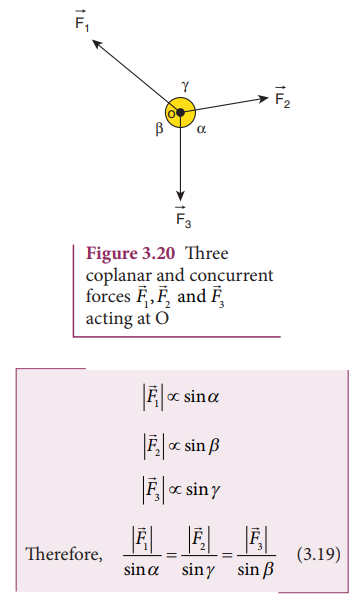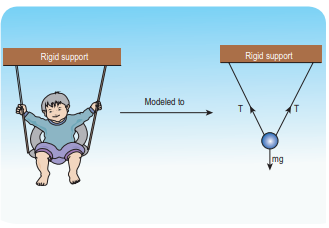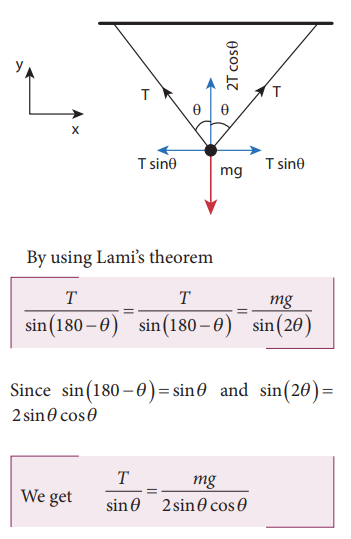Laws of Motion - Lami’s Theorem | 11th Physics : UNIT 3 : Laws of Motion
Chapter: 11th Physics : UNIT 3 : Laws of Motion
Lami’s Theorem
LAMI’S THEOREM
If
a system of three concurrent and coplanar forces is in equilibrium, then Lami’s
theorem states that the magnitude of each force of the system is proportional
to sine of the angle between the other two forces. The constant of
proportionality is same for all three forces.
Let
us consider three coplanar and concurrent forces  which act at a common point O as shown in Figure 3.20. If the point is at
equilibrium, then according to Lami’s theorem
which act at a common point O as shown in Figure 3.20. If the point is at
equilibrium, then according to Lami’s theorem

Lami’s
theorem is useful to analyse the forces acting on objects which are in static
equilibrium.
Application of Lami’s Theorem
Example 3.14
A baby is playing in a swing which is hanging with the help of two identical chains is at rest. Identify the forces acting on the baby. Apply Lami’s theorem and find out the tension acting on the chain.

Solution
The baby and the chains are modeled as a particle hung by two strings as shown in the figure. There are three forces acting on the baby.
i. Downward gravitational force along negative y direction (mg)
ii. Tension (T) along the two strings
These three forces are coplanar as well as concurrent as shown in the following figure.

From this, the tension on each string is T = mg / 2cosθ
Related Topics